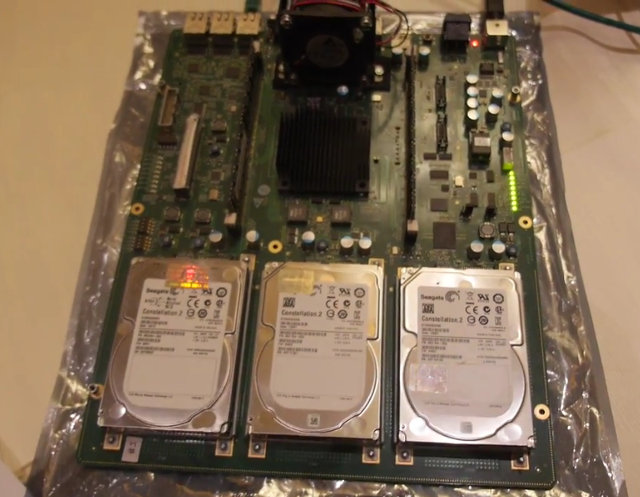During Linaro 14.02 release, I noticed a Huawei D01 board with 16 ARM Cortex A15 core, but details were lacking. Charbax was a Linaro Connect Asia earlier this month, and he could film the board in action, and interview the development team about this server board, and software development.

Huawei D01 specifications:
- Processor
- HiSilicon SoC with16 x ARM Cortex-A15 CPU Core @ max. 1.5GHz (up to 84000 DMIPS)
- Support for CPU configuration as AMP/SMP
- Configurable Big or Little endian. Default: Little endian
- System Memory – 2x 64bit DDR3 DRAM Dual Inline Memory up to 1600 MHz, Module(DIMM) sockets:(2)&(3) . Default capacity: 8GB, upgradeable to 64GB
- Storage – 2x 1Gb NOR Flash, 2x 512MB NAND Flash, 3x SATA III for 2.5″ hard drives or SSD, 1x SD card
- Connectivity – 2x 10/100/1000Mbit/s Gigabit Ethernet ports, 1x 10/100Mbit/s FE port
- Other Peripheral Interfaces
- 2x USB 2.0 Host ports
- 2x UART, 4x I2C, 2x SPI supporting four CSs
- GPIO – 8x LED interfaces, 8x switches
- 2x Tracer Connector
- 1x JTAG interfaces( 5×2 pin CPU Connector, ARM Connector)
- Expansions – 1x PCI Express interfaces, 3x MDIO interfaces
- Hardware Monitor Subsystem – Power consumption sense
- Misc – Power-off and reset buttons
The BIOS resides in the NOR Flash and support update via FTP. The board runs Ubuntu server OS with Linux 3.13 (upgraded to 3.14 soon), and the target market is mostly cloud based applications. Linaro will use the board for developing software for Hisilicon, and as a native ARM build machine.
Watch the video below. Warning: Noisy ARM server!
You can find more technical details on Linaro D01 page.

Jean-Luc started CNX Software in 2010 as a part-time endeavor, before quitting his job as a software engineering manager, and starting to write daily news, and reviews full time later in 2011.
Support CNX Software! Donate via cryptocurrencies, become a Patron on Patreon, or purchase goods on Amazon or Aliexpress




